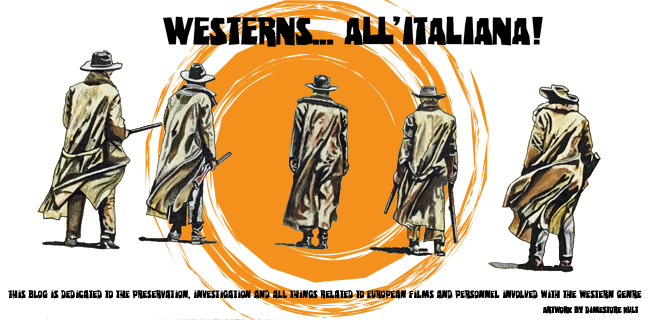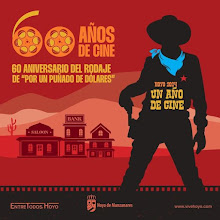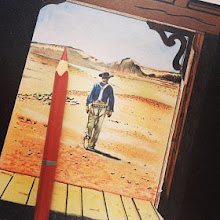Diego Garcia de la Peña, retired regular rejoneador at El
Bibio and with a history of 57 broken bones, worked in Western films as
specialist for risky scenes
La Nueva Espana
By I. Pelaez
8/13/2017
Between brave bull fights and horse falls he has 57
broken bones in a body and five times was horned by bulls. The bullfighting teacher
Diego Garcia de la Peña - a retired reporter, cattle dealer and specialist in
early Spanish western films, especially those of Anthony Quinn - knows no
limits. "Although I have been split in two, physically and economically,
and have received more sticks than a mat, bulls are my religion," explains
the teacher, a declared Catholic, as he has been doing since 1985 after
retiring from the arena, he now goes to the fair.
He does it by hobby and also by familiarity. His wife is
half an Extremadura half Asturian. Diego Garcia de la Peña soon perceived the
hobby of the horse in Asturias. The equestrian learned and teaches at the
riding schools of the region. Hence, it seemed logical that a full run of
rejones should be announced at El Bibio again. "The rejoneo lives at a
good moment, and has achieved an extraordinary technique, spectacular good
horses and even has achieved an extraordinary type of bull," he says,
making it clear that now there are two bullfighters on horseback better than
the rest: Diego Ventura And Leonardo Hernandez, who are now fighting in El
Bibio.
As a young man, he took advantage of his talent on horseback,
doing stunts in the countryside for the flood of American film productions that
fled from Hollywood to Spain to cut costs. The "Spaghetti western"
paid very well for the falls. "Of that he was studying and with what they
paid you were the king of the world," he confesses. Hence no chance was
missed, even if it was to make horse falls or risky scenes by Anthony Quinn.
"I read in the paper that he was to be a general of the Mexican
revolution, they put a wig on me, a uniform with scraps and the medal, riding
saber in hand and fighting," he recalls between laughs.
But his passion was bullfighting on horseback. A show
that he now enjoys as an amateur and perceived as different from what he
experienced as a professional. He had to deal with the waste that the
bullfighters did not want on foot. The worst of each livestock and every
encasta. Even his father told him that to run behind a horse was served by any
bull. "Before we had worse horses, we would fight with what there was but
now they are spectacular machines, but they are fighting in the same
place," he says. The key, he says, is that a horse has a good physical,
short, medium height, gathered and with "coconut". He denies that
there are any horses that fight alone. He argues. "If you lose a bull and
a horse only in the square, if the bull is in the shade the horse will go to
the sun and vice versa, he goes to the other end, no matter how good the torero
the horse is, Mounted, is the one who commands ", he reveals.
As a good fan, with a safe voice and accurate analysis,
he keeps in his head the names that have been making his profession big.
Antonio Cañero, Álvaro Domecq and Díez, all the old Portuguese rejoneadores and
Angel Peralta, that professionalized the rejoneo. Then he quotes the Portuguese
Luceiro, Mestre Baptista, Nuncio and Lupi. Of the Spaniards are Álvaro Domecq,
Rafael Peralta, Moreno Pidal, Vidrié. Of his time he speaks of Curro Bedoya,
Joaquín Moreno Silva, Antonio Ignacio Vargas, et cetera. Joao Moura, mention
aside, school for today's rejoenadores. "Beautiful Mendoza has not done
anything that Moura had not already done," he analyzes, thinking about the
show he attended that afternoon.












No comments:
Post a Comment